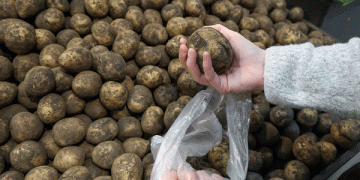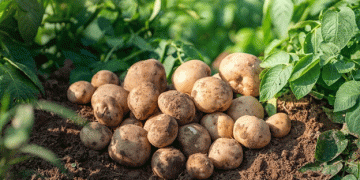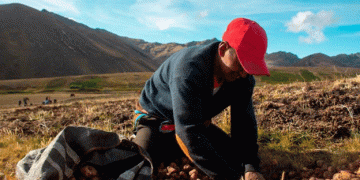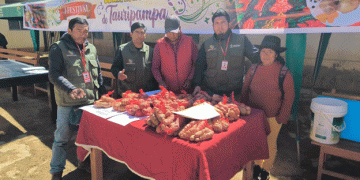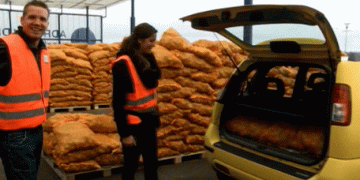Our Fight Against Blight programme started in 2004 and since then ‘blight scouts’ have sent in over 10,000 samples of potentially blight infested potato plants for genotyping.
Each year the results are published because knowing the location of outbreaks and the dominant genotypes, allows for better prevention of the disease. This has been particularly valuable when genotypes behave differently to the norm, for example if they are insensitive to a certain treatment, or if they aggressively reproduce more quickly than typical spray cycles.
This winter Peter Skelsey, David Cooke and colleagues from the James Hutton Institute did some additional analysis on the data from all 17 years of samples. Here’s what they found:
Fight Against Blight data is sound with good geographical spread

David Cooke said: “We now have a very large data set, and it has been useful in many ways, for example growers and agronomists are used to seeing our annual genotypes graphic. The data set was also used in the development of the Hutton Criteria, the measure now used to monitor if the conditions for blight are present.
“When we began looking back at the dataset as a whole, the obvious first question was – is this data representative of the whole? When we compared the geography of our scout samples to where AHDB collects levy we found that in general is was a good representation.”
There were some variations, for example Herefordshire and the Scottish Borders showed a slightly lower frequency of blight sampling in comparison to other areas with similar levels of commercial potato growing activity.
Are you a grower or agronomist in either of these areas? If so please consider join the Fight Against Blight as a scout to improve the data from your area and ultimately the industry’s ability to combat the disease.
Are there blight ‘hotspots’ based on location?
As you would expect, the closer you are to an area where lots of potatoes are grown, the higher the risk of a blight outbreak – as shown by the ‘hotspots’ on the map below. Ultimately, the risk of blight is high in all potato growing areas and the threat of spread into your growing regions depends partly on risk in the neighboring postcode districts.

The researchers also looked at the risk of an ‘early’ blight outbreak. There is an added level of complexity in this work due to the variation of growing progress from year to year. Because of variable factors like time of emergence and weather conditions it was difficult to find patterns in the data. In 2020 for example, the first samples of blight were found in Aberdeenshire.
How quickly do blight genotypes spread?
The data also allowed us to track the spread of blight genotypes across the country. “The take-home message here is that new genotypes can spread rapidly across the country. Using EU_37_A2 as an example, a strain that is insensitive to fluazinam, in 2017 we saw outbreaks moving at 3.2km a week, in 2018 that rate increased to 13.8km a week.”
Conclusions and next steps
David Cooke said: “We’ve found looking at this data useful, and we’ve not finished with it yet. Next we’re going to look at what comparisons we can make with European data.
“That said, the year to year variation does provide a challenge when looking for conclusions and the risk of late blight is high in all potato growing areas.
“What has been underlined is that you’re at most risk of blight if you grow in an area of intensive potato production and that new strains can spread fast.”
David concluded by confirming that Fight Against Blight will be running in 2021, and that blight scout packs are on their way out to existing scouts. If you would like to sign-up to join the Fight Against Blight, new scouts are always welcome, and we are particularly interested in hearing from agronomists in the Scottish Borders, Lothian and Herefordshire, you can sign-up here: https://blight.ahdb.org.uk/BlightReport
Finally, David said: “Remember all blight has to start somewhere, so look out for primary sources of inoculum like groundkeepers, and follow good practice with discard piles, seed selection and rotations.”
Watch the full recording of David presentation, and a Q&A with blight scouts below:


